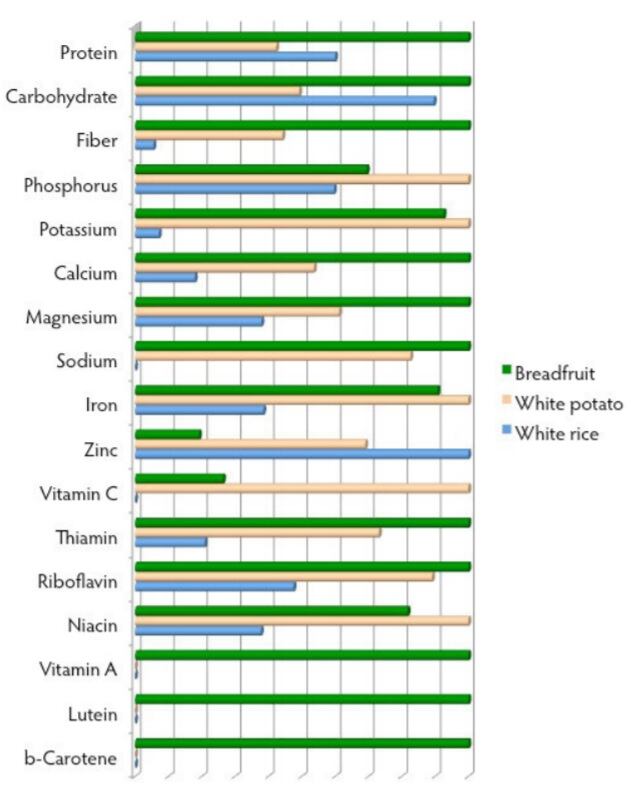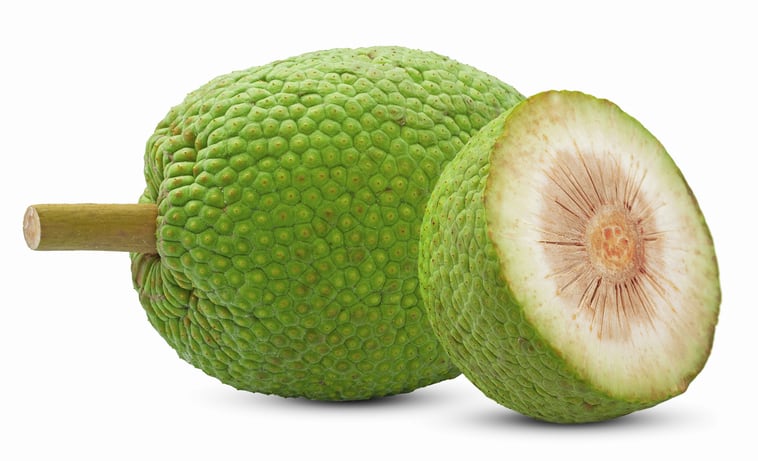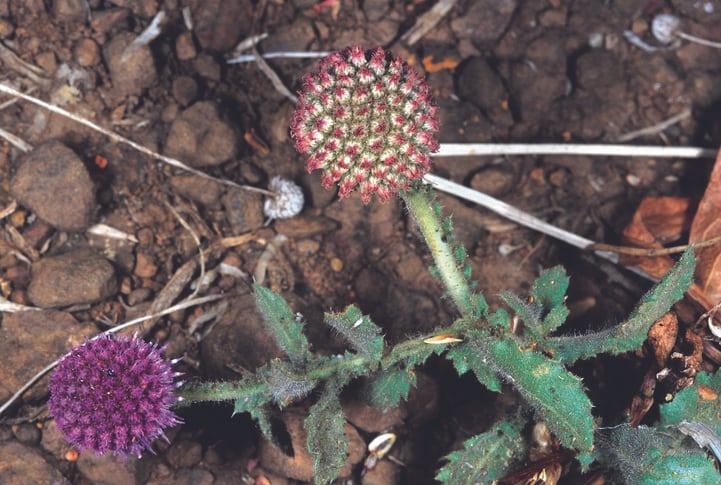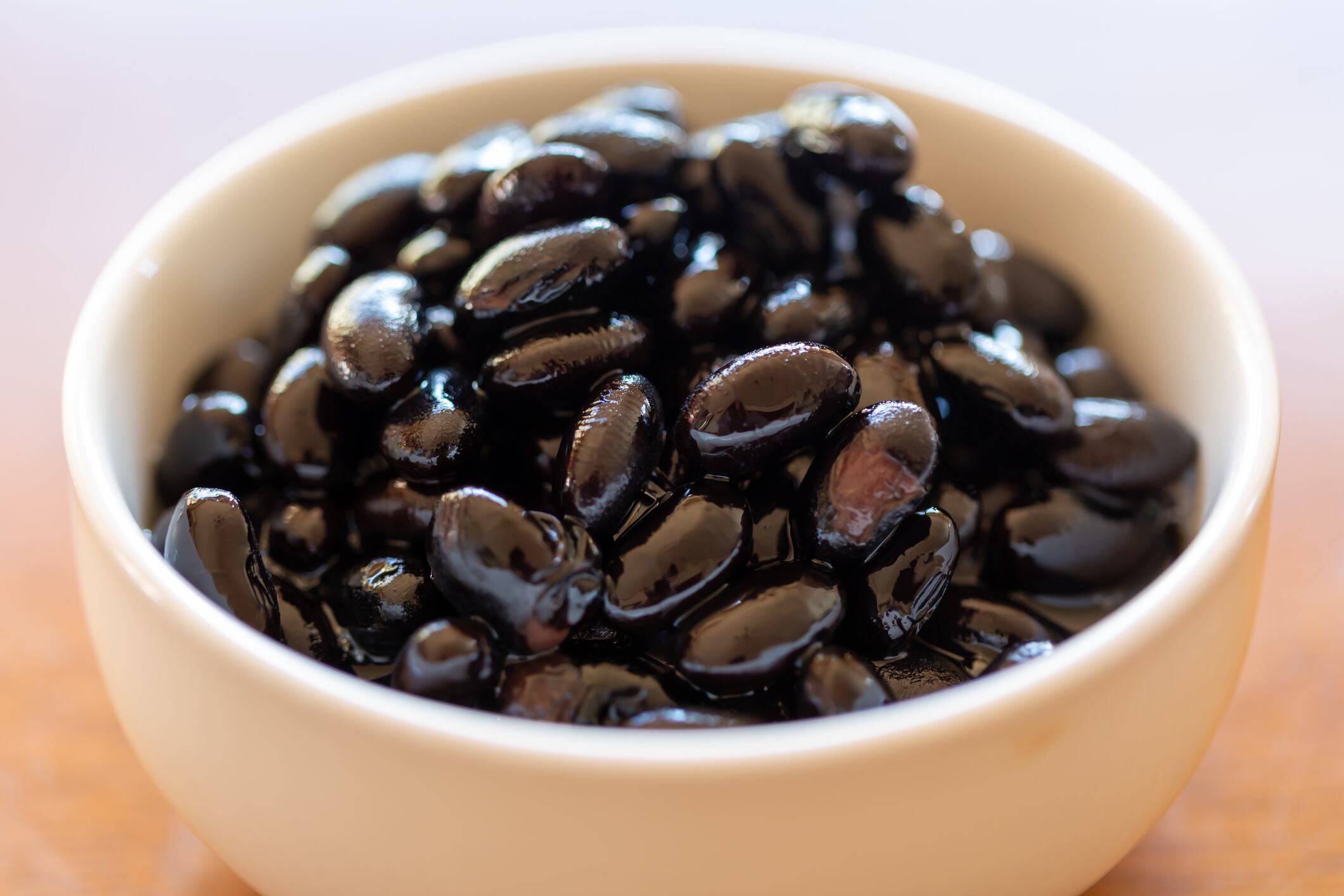Breadfruit (Artocarpus altilis) is a tropical tree that originated from Papua New Guinea. The crop has been grown in the Pacific for nearly 3,000 years and was first introduced to other tropical regions over 200 years ago.
The starchy fruit, which now grows in abundance in tropical and South Pacific countries, has a long, rich history as a diet staple for many cultures in tropical and South Pacific countries. The versatile fruit can be eaten at all stages of development and maturity, although the mature form is the most desirable. The fruit can also be dried and ground up to be used in dietary supplements or into flour and repurposed into many types of meals.
"Breadfruit is a traditional staple crop from the Pacific islands with the potential to improve worldwide food security,” explained University of British Columbia Okanagan researcher Susan Murch, PhD. "While people have survived on it for thousands of years there was a lack of basic scientific knowledge of the health impacts of a breadfruit-based diet in both humans and animals. Since the crop was not previously widely distributed in Europe or North America, research on the basic nutrition and potential as a food additive were lacking.”
Murch, who has over 20 years of experience with plant tissue culture and plant chemistry, explained that one of the reasons breadfruit is such an underutilized crop is because it is difficult to propagate. “Traditionally, breadfruit trees are propagated by wounding a root near the surface and encouraging growth of a new shoot from the wound. It is only possible to propagate 2 or 3 new young trees per year from this method and breadfruit does not produce seeds so it was very difficult to get trees to plant.”
“There are thousands of varieties of breadfruit bred by the indigenous peoples of the Pacific over hundreds or thousands of years. Each variety has a unique taste, smell, colour, nutritional composition etc. Some varieties are very sweet and other varieties are more starchy.” -Susan Murch, PhD
Murch decided to change that by developing propagation methods of breadfruit cultivars in a sterile, controlled environment for long-term conservation and as the source of disease-free plant material. She explained “In 2008, we reported development of a tissue culture method for mass micropropagation of breadfruit trees that enabled commercial plantings and worldwide distribution for the first time. A company that commercialized this method has planted over 150,000 breadfruit trees in over 50 countries in the last decade.”
She also took a swing at advancing scientific knowledge by leading extensive studies to further establish the superior nutritional value of breadfruit.
Her most recent research, published in PLOS ONE and led by doctoral student Ying Liu, examined the digestion and health impact of a breadfruit-based diet.
Research
"The objective of our current study was to determine whether a diet containing breadfruit flour poses any serious health concerns," explained Liu, who conducted the study with colleagues from British Columbia Institute of Technology's Natural Health and Food Products Research Group and the Breadfruit Institute of the National Tropical Botanic Garden in Hawaii.
To determine the impacts of a breadfruit-based diet, the researchers fed mice flour ground from dehydrated breadfruits.
The researchers found that mice fed the breadfruit diet had a significantly higher growth rate and body weight than standard diet-fed mice. They also found that breadfruit protein is easier to digest than wheat protein.
"As the first complete, fully-designed breadfruit diet study, our data showed that a breadfruit diet does not impose any toxic impact," says Liu. "Fundamental understanding of the health impact of breadfruit digestion and diets is necessary and imperative to the establishment of breadfruit as a staple or as a functional food in the future."
Nutrient composition
Liu said breadfruit’s nutritional and sustainable attributes could help improve sustainability. With Americans consuming an average of 189 grams (6.67 ounces) of grain per day, Liu further explained that the same amount of cooked breadfruit could meet up to 57% of the daily fiber requirement and over 34% of the protein requirement, while also providing vitamin C, potassium, iron, calcium and phosphorus.

"Overall, these studies support the use of breadfruit as part of a healthy, nutritionally balanced diet," said Liu.
According to the Breadfruit Institute of the National Tropical Botanical Garden and Hawai‘i Homegrown Food Network, breadfruit is high in complex carbohydrates, low in fat, as well as cholesterol and gluten free. It has a moderate glycemic index compared to white potato, white rice, and white bread.
Breadfruit also provides nutritional benefits not present in white rice or white potato, such as carotenoids like β-carotene and lutein.
Get that bread
The global plant-based protein market size is projected to grow from $10.3 billion in 2020 to $14.5 billion by 2025, with a compound annual growth rate of 7.1% during the forecast period, according to ReportLinker.
The report noted that innovations and developments in plant-based protein are boosting the vegan trend, which in turn is driving up the demand for plant-based protein.
This presents a lucrative opportunity for breadfruit to be positioned as a plant-based protein in the sports nutrition market. Murch said she expects breadfruit to take off in the protein market and beyond:
“I think that there are signs that breadfruit will enter the world food markets in a big way in the next decade. Fresh breadfruit harvested in the Caribbean is shipped to Canada and sold in grocery stores. A company that produces vodka from breadfruit is very successful. A cosmetics company is also very successful. Breadfruit is just starting to emerge as a source of high-quality protein and the protein market is expanding. There is enormous potential for breadfruit in the protein sector.”
Source: PLOS ONE
(2020). DOI: 10.1371/journal.pone.0236300
“Breadfruit flour is a healthy option for modern foods and food security”
Authors: Y. Liu et al.




